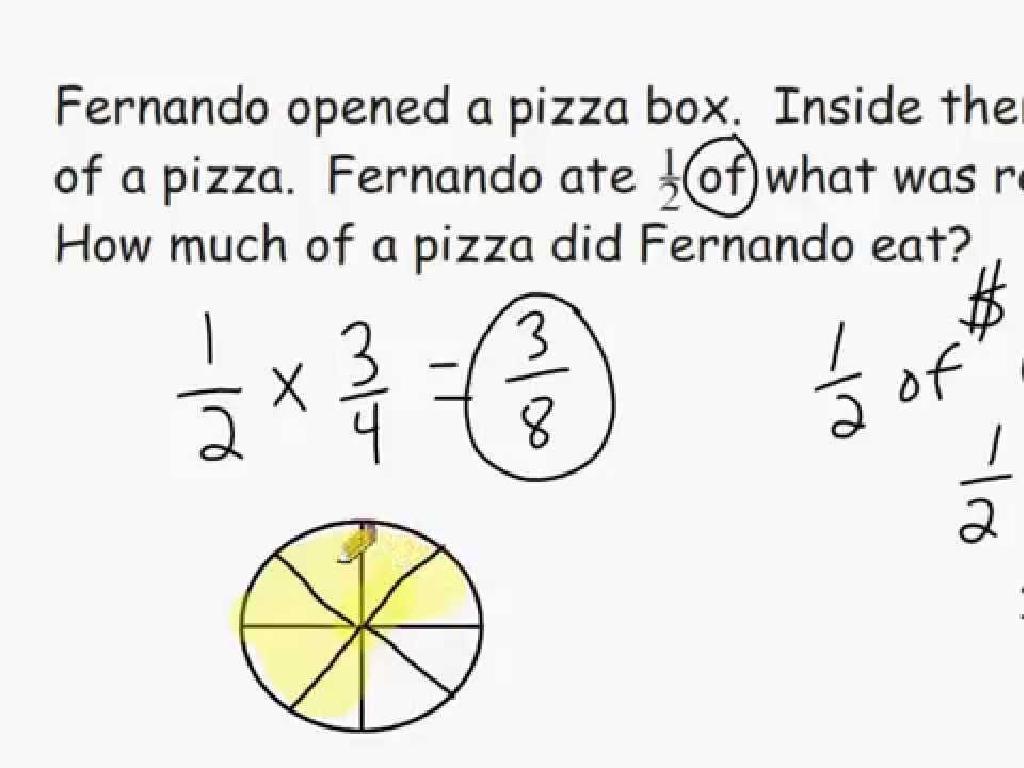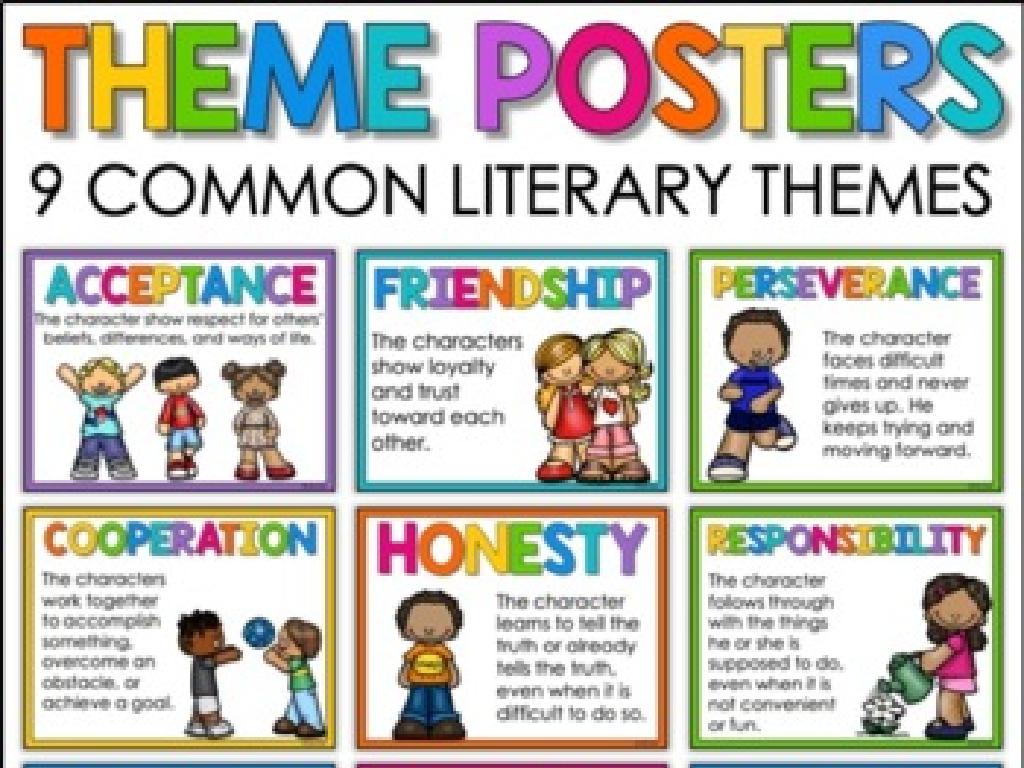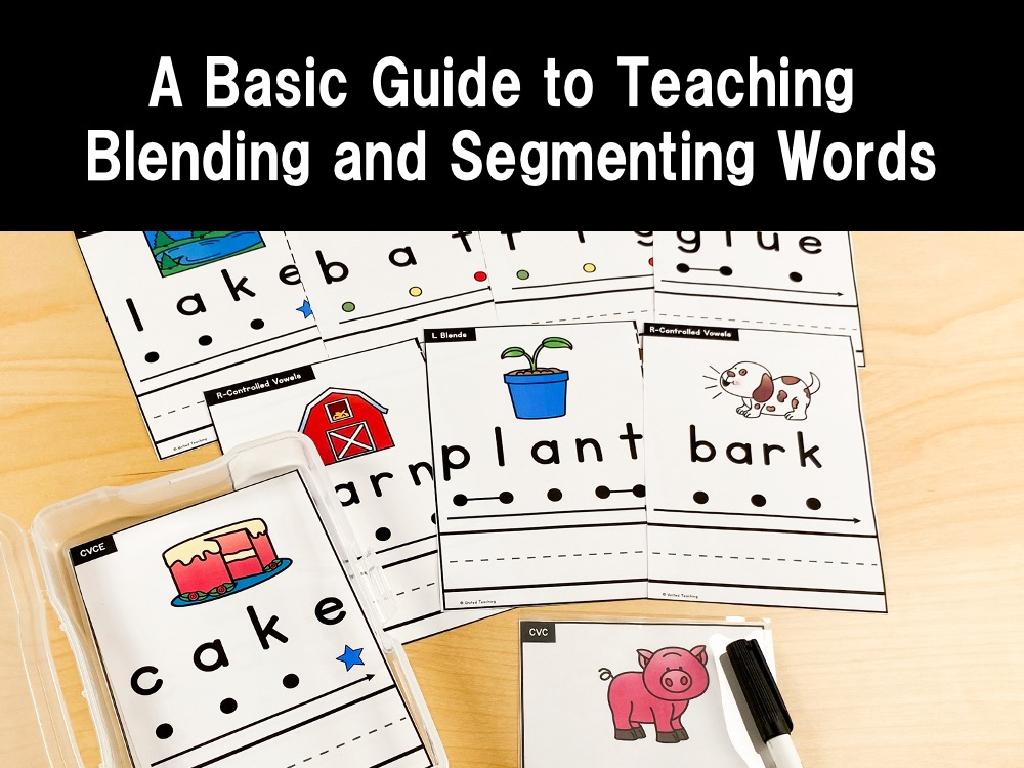Choose The Antonym
Subject: Language arts
Grade: Eighth grade
Topic: Synonyms And Antonyms
Please LOG IN to download the presentation. Access is available to registered users only.
View More Content
Understanding Synonyms and Antonyms
– Power of word choice
– Define synonyms and antonyms
– Synonyms: words with similar meanings, e.g., happy and joyful. Antonyms: words with opposite meanings, e.g., happy and sad.
– Significance in language
– They enrich our language, allowing for precise and varied expression.
– Enhancing communication
– Using synonyms and antonyms effectively can improve our speaking and writing skills.
|
This slide introduces the concept of synonyms and antonyms, emphasizing their importance in effective communication. Start by discussing how word choice can influence the meaning and tone of our language. Define synonyms and antonyms, providing clear examples for each. Explain how these tools add richness to our language and allow us to express ourselves more accurately. Highlight that understanding and using synonyms and antonyms can greatly enhance students’ verbal and written communication, making their language more vivid and precise. Encourage students to think of additional examples and to consider how changing a single word in a sentence can alter its meaning.
Understanding Antonyms
– Define antonyms
– Words with opposite meanings, e.g., hot – cold
– Common antonyms examples
– Examples: happy – sad, success – failure
– Antonyms in language contrast
– They enhance writing by showing differences
– Practice with antonyms
|
This slide introduces the concept of antonyms, which are words with opposite meanings. Start by defining antonyms and providing clear examples that students can easily relate to. Discuss how antonyms can be used to create a strong contrast in language, enhancing both spoken and written communication. Encourage students to think of additional antonyms and consider how they might use them to add depth to their writing. In the next class, plan an activity where students find and share antonyms from their reading or create sentences using contrasting words to reinforce their understanding.
Identifying Antonyms
– Strategies to find antonyms
– Look for words with opposite meanings, like ‘hot’ and ‘cold’.
– Use context for opposite meanings
– The surrounding text can hint at the antonym; ‘The sun was blazing, unlike the chilly moon.’
– Practice with sentence examples
– Find antonyms for words in provided sentences to strengthen understanding.
– Class activity: Antonym hunt
|
This slide introduces students to the concept of antonyms and provides strategies for identifying them. Emphasize the importance of understanding context, as it often provides clues to a word’s antonym. During the class activity, students will engage in an ‘Antonym Hunt’ where they will work in pairs to find and list antonyms from a reading passage. This interactive activity will help solidify their understanding of how antonyms work and how they can be identified through context. Encourage students to discuss their findings and explain the reasoning behind their choices. This will not only enhance their vocabulary but also improve their critical thinking skills.
Choose the Antonym: Understanding Opposites
– Match words with antonyms
– Impact of antonyms on meaning
– Choosing an antonym can completely reverse a sentence’s meaning.
– Group activity: Sentence creation
– Use the same word in two sentences, but with its antonym to change the meaning.
– Explore how opposites alter sentences
|
This slide introduces an exercise focused on antonyms, which are words with opposite meanings. Students will match words to their correct antonyms to understand how the use of an antonym can significantly alter the meaning of a sentence. In the group activity, students will create pairs of sentences using the same key word and its antonym to demonstrate the change in meaning. This activity will help students grasp the importance of word choice in language and enhance their vocabulary skills. For the teacher: Prepare a list of words and their antonyms for the matching exercise. Monitor the group activity to ensure that students are correctly using antonyms and encourage them to discuss the different effects the two sentences have.
Antonyms in Literature
– Antonyms enhance literary expression
– Opposite words add depth to writing, like ‘light’ and ‘dark’
– Authors use antonyms for contrast
– They highlight differences, showing emotional or thematic opposites
– Analyze antonyms in texts
– Examine how antonyms are used to emphasize contrasting ideas
– Discuss antonyms from your readings
– Share antonyms found in your favorite books or poems
|
This slide aims to explore the significance of antonyms in literature, emphasizing how they contribute to the richness of poetry and prose. Antonyms are used by authors to create contrast and emphasize opposing ideas or emotions, which can add complexity and depth to literary works. Encourage students to think critically about how the deliberate use of antonyms can influence a reader’s understanding of a text. During the class discussion, ask students to bring up examples of antonyms they have encountered in their own reading, fostering an interactive learning environment. This will help them to not only recognize antonyms but also appreciate their impact on literary expression.
Class Activity: Antonym Challenge
– Pair up and find antonyms
– Write a story with 5 antonym pairs
– Use the antonyms creatively in your narrative
– Present and explain your antonyms
– Share why you chose each antonym pair
– Engage with peer stories
– Listen and discuss the use of antonyms in classmates’ stories
|
This activity is designed to reinforce the students’ understanding of antonyms through a creative and interactive exercise. By working in pairs, students will collaborate to identify opposite meanings for a given list of words. They will then craft a short story incorporating at least five pairs of antonyms, which will help them understand how antonyms can be used effectively in writing. During the presentation, each pair will explain their choice of antonyms, providing insight into their thought process. As a teacher, facilitate the activity by providing a diverse list of words and ensure that each pair has the opportunity to present. Encourage active listening and constructive feedback during the presentations to foster a supportive learning environment.
Wrapping Up: Antonyms & Their Impact
– Recap: Understanding Antonyms
– Review the key points about antonyms from today’s lesson.
– The Power of Word Choice
– Choosing the right words can change the tone and clarity of our language.
– Homework: Crafting Contrasts
– Write ten sentences that use antonyms to highlight contrasting ideas.
– Antonyms Enhance Communication
– Using antonyms effectively can make our writing and speech more engaging and precise.
|
As we conclude today’s lesson, remind students of the importance of antonyms in language. They allow us to express clear opposites and create interest in our communication. For homework, students should write ten sentences that use antonyms to show contrast, which will help them understand how antonyms can be used to emphasize differences in ideas. This exercise will also reinforce their understanding of the lesson and improve their ability to use antonyms in their writing and speaking. Encourage creativity and the use of a variety of words. In the next class, we can discuss some of the sentences they’ve created to highlight effective use of antonyms.






